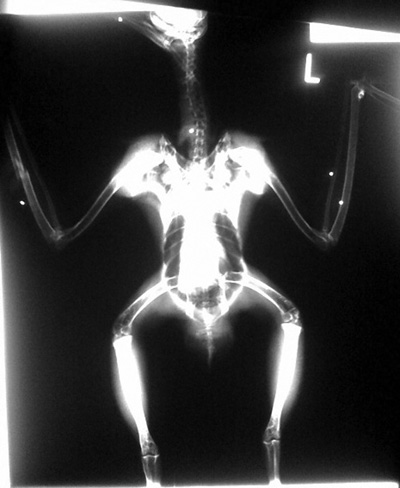If there ever was a bird that embodied
”
hope,
”
it would be this female red-tailed hawk that was rescued early
in December and brought to the Wildlife Education and
Rehabilitation Center in Morgan Hill.
“‘Hope’ is the thing with feathers, that perches in the soul” – Emily Dickinson
If there ever was a bird that embodied “hope,” it would be this female red-tailed hawk that was rescued early in December and brought to the Wildlife Education and Rehabilitation Center in Morgan Hill. The bird’s initial examination showed a wing injury, which prevented it from flying. Since nobody had witnessed what had happened to the hawk, it was assumed that perhaps the injury had been caused by a collision with a vehicle, which is a too-common occurrence with the species.
At WERC, the hawk was immediately treated for dehydration and pain, and the wing was wrapped to stabilize the bone. In order to be able to determine the full extent of the injury, so as to provide the appropriate medication and treatment, the hawk was brought to Dr. Laura Bellinghausen at Western Career College in San Jose, for x-rays. When the film was developed, Bellinghausen was astounded and horrified to see that the hawk’s body was riddled with buckshot. The entrance wounds were tiny and difficult to see under the feathers. Even the beak had been hit. We can only imagine this hawk’s terrible pain, because birds have evolved not to demonstrate physical distress, to avoid attracting predators in the wild. What unthinking cruelty it was for someone to use this beautiful bird-of-prey as target practice.
The prognosis for the hawk is touch-and-go. Its treatment will be intensive, long-term and expensive as it will need weeks of medication and further medical treatment. Until the hawk can eat on its own again, it will continue to require hand-feeding every day. Then, if the hawk’s general condition improves and the fracture heals well, physical therapy must be performed several times a day to return flexibility and strengthen the wing. The rigorous regimen, by specially-trained volunteers, requires gently and carefully extending the wing and flexing the bird’s wrist.
Once the hawk’s condition has stabilized, the possibility of surgically removing the pellets may be considered. At this time, the procedure would be too dangerous. When the medical treatment is complete, the hawk will be transferred to the large flight enclosure to ensure that it is capable of perfect flight.
WERC is cautiously optimistic that when spring arrives in the new year, this red-tailed hawk, who has been given the name “Hope,” will once again soar in the sky.
Watch for periodic updates on the hawk’s progress in this newspaper’s online Lifestyles South Valley Pet Blog.










